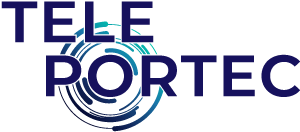NFTs’ Impact Can Reach Far Beyond Pricey Digital Art
Star Trek legend and blockchain advocate, William Shatner, made and sold a non-fungible token (NFT) of an X-Ray of his teeth. The entrepreneur known as MetaKovan paid $69.3million to the digital artist known as Beeple for an NFT of “Everydays The First 5000 Days.” The price confounded many because anyone can view and copy it for free. It is very early days for NFTs, and they hold as much confusion as they do potential. Most people don’t realize that buying an NFT doesn’t give you ownership of the digital property. Most people don’t realize that NFTs can also be used for physical objects and personal information. I think that NFTs’ most profound future impact may be in safeguarding things that are very personal and real: your identity, and your land.
The NFT market is enormous and skyrocketing
According to the NFT Report 2020, published by L’Atelier BNP Paribas and Nonfungible.com, the value of the NFT market grew by 299 percent in 2020 to top $250 million. That’s nothing: it was $208M in March 2021 alone. You can track it in real-time here: https://nonfungible.com/market/history.
The Tyranny of Jargon
Much of the confusion and mystery surrounding NFTs comes from the strained nomenclature and whimsical names of the technologies and actors. In studying NFTs, one encounters terms like DAO, MANA, Wallet, and dapps. There are virtual worlds including Cryptovoxels and Decentraland and individuals such as Twobadour. You learn that in Decentraland, MetaKovan can move MANA between Ethereum and Polygon. To many the names sound cool but they can feel like a layer of obfuscation to those who are trying to crack the technology’s code. In actuality, MetaKovan is Vignesh Sundaresan’s pseudonym. He’s a young fellow in Singapore, and he paid the $69.3million in Ethereum’s currency, Ether or ETH, to Mike Winkleman, the talented South Carolinian whose pseudonym is Beeple. MetaKovan was also responsible for 2019’s biggest NFT purchase: $111K for a digital Formula-1 racer. It probably has more utility than a physical collector vehicle. MetaKovan can race his trophy car without a worry in the game, F1® Delta Time. In contrast, rare physical automobiles are typically hidden in garages and periodically trucked to shows.
NFTs Decrypted
The Term, NFT

Let’s decrypt “non-fungible token” into everyday language. Start with businesses using physical tokens. Often coin-like, tokens make it easy for customers to use facilities and services. Many transit systems use tokens. Chuck E Cheese, the family food and entertainment center, uses tokens. Customers exchange money for tokens, then play the games by inserting tokens. The tokens give access to the games. Those tokens make it easier for kids to play the games and for Chuck E Cheese to operate the games and accept parents’ money. The games don’t care which of your tokens you drop in the slot. The Chuck E Cheese coins are identical and interchangeable: they are “fungible.” So, Chuck E Cheese coins are fungible tokens on the Chuck E Cheese platform.

NFT In English
At most hotels you use a token, and it’s programmable: your room key. The key is non-fungible: it will open only your room, and your room’s lock will only open for that key (if the front desk staff did their jobs). Your key is a programmable, non-fungible token for access to your room.
If that hotel room is the $30K/night Grand Riad at the Royal Mansour in Marrakech, you might post selfies on Instagram. That key comes with bragging rights.
NFTs like the one Beeple created for his piece are digital, just lines of software. They have some significant advantages over your room key. One is that instead of only bestowing access to something physical, albeit exquisite furniture and a world-class view, they can be programmed to hold rights and documentation for all types of assets. You can make an NFT for a song, a documentation for ownership of a boat, a university degree, an impressionist digital video of your teeth, or a lock of Lady Gaga’s hair (a cash crop). Your room key doesn’t contain information about who last owned the rights to your room or how much they paid. Today’s digital NFT holds the complete and unchangeable history of who created it, who it was sold to, when, and the price. Provenance is built in. Another profound advantage is that the digital NFT, those lines of software, can be program-like themselves. For instance, an artist can create an NFT of her work that automatically sends her a percentage every time it is sold. Suppose that Beeple’s NFT remitted him 10% of every resale. If MetaKovan sells the NFT for $100M, Mike Winkleman will receive $10M for his talent, creativity, and effort. It’s like being able to write your own credit card reward program. Think of an NFT as a programmable, custom title and record for some sort of asset. When I ran my description of an NFT past a Silicon Valley colleague, she replied, “Why don’t you just call it what it is, a smart contract.” A linguistic bubble stretches from San Francisco to San Jose. It is assumed that every educated person on and off-planet is familiar with the term “smart contract.”
What Can You Do With an NFT?
A quick review: this programmable custom title has some incredible features:
- It can apply to anything, physical or digital. It can hold a digital image of a house or the deed to the physical place.
- It’s a computer program and runs automatically. When all of the terms are met, like payments, it executes. There’s no need to wait for a notary public stamp or a settling period on a stock exchange.
- It is virtually impossible to forge or alter. (NFTs are stored in blockchain databases, and this is one of their features. If you want to know more about what blockchain databases are and how they work, hereis a great explanation.)
- The NFT’s ownership record, the detailed lineage from the NFT’s creation through every single sale or transfer, lasts forever (Another excellent blockchain property).
- The ownership record is publicly viewable (Yet another blockchain benefit).
NFT’s broad applicability has entrepreneurs working on a plethora of application areas.
- Fashion, to document a garment’s provenance and supply chain
- Virtual worlds and gaming, where NFTs started and still their principal use. The owners of expensive art NFTs will hang their prizes on the walls of virtual galleries in worlds like Decentraland.
- Physical-world access, like tickets to events.
- Web domain names.
Some NFT Misconceptions: Caveat Emptor
If you buy an NFT for digital art, do you own the art? You will only if that’s what the terms in the NFT say. The seller does not need to grant a copyright. As with any contract, always read the fine print. MetaKovan’s NFT for Everydays The First 5000 Days does not include the copyright. The artist has, in fact, already sold an NFT for one component of the collage titled “Ocean Front” for another $6million. MetaKovan can resell the Everydays The First 5000 Days NFT, but only Beeple can create and sell NFTs of its 5000 parts. Here’s another example. In October 2020, The NBA debuted “Top Shots.” It is a collection of NFTs of video clips of famous players and plays called “Top Shot Moments.” When you buy a Top Shot Moment:
- You get the digital token to that video.
- You can show publicly that you own the token to the video.
- You don’t get the copyright to the video.
- You can’t use the video for commercial purposes.
- You can’t resell an altered version of the video.
- The NBA could always make more of a Moment with different camera angles, etc. You are trusting that they will not do that.
In just six months, Top Shots transactions topped $527million. Most are secondary market resales, and the NFTs automatically remit 5% of every resale to the NBA. Both Everydays and Top Shots videos are available for free online. Why pay for the same video of a LeBron James dunk that you can watch on YouTube? Here new technology meets legacy human psychology. Technology changes rapidly, humans not so much.
It Sold For How Much??
The venerable auction house, Christie’s, knows all about how humans value collectibles. Christies auctioned Everydays The First 5000 Days in February. Yes, Christie’s auctioned an NFT. In May they will offer another “important” collection of web art: a set of CryptoPunks. Their promotion explains what collectors will bid up.

- Provenance: “Larva Labs launched CryptoPunks on June 23, 2017, inspired by the 70’s London punk scene. Now Hall and Watkins themselves are putting up a set of their own CryptoPunks for traditional auction.”
- Clear title, thus ownership bragging rights: “Only one person can officially own a CryptoPunk. Sure, there can be unlimited identical copies, but only one of them is indelibly signed with the artist’s cryptographically-protected signature.”
- Rarity and importance: “The collection of 10,000 CryptoPunks is definitive and unalterable… It consists entirely of punks with sub-1,000 series numbers, including CryptoPunk 2, a female Punk with wild hair, and an extraordinarily low edition number for a set of 10,000. Also in the batch is the bandana and shades wearing CryptoPunk 635, one of only nine aliens in all 10,000, who also happens to be the only alien with a sub-1,000 series number.”
Provenance, rarity, importance, and clear ownership are collectors’ touchstones. That’s why the NFT for an animation with 187M YouTube views (“Nyan cat,” a flying cat with a Pop-Tart body spewing a rainbow trail) sold in February for nearly $600,000. I think that enrollment in digital art classes is going to explode. Christie’s is launching headlong into art NFTs in their 256th year of operation. 256, the number of possible values in an 8-bit byte, is a notable figure for us bit-twiddling geeks, just like Nyan cat is essential art in the eyes of many beholders.
NFTs Beyond Art and Speculation: Social Impact
Exploding digital art prices have grabbed the headlines. Still, I think that NFTs have profound potential to solve nagging social problems. NFTs could prove a person’s identity or a family’s claim to their land.
The Case of Missing Identity
If you don’t have official, government-issued identification, you have serious problems.
- You cannot legally hold a job
- You cannot have a bank account
- You cannot go to school
- Your ability to travel is severely restricted
Those most likely to lack identification are the poor and refugees; the numbers are enormous. The UN Refugee Center estimates that 26.3M people lived as international refugees in 2020. According to the ACLU, in the wealthiest nation in human history, 21 million Americans lacked a government-issued photo ID in 2017. Identification is so fundamental that the UN’s Sustainable Development Goals (SDGs), target 16.9, calls on all countries to achieve legal identity for all by the year 2030. Fragile papers like birth certificates, the foundations of official identification, are easily lost or destroyed. Suppose a homeless person with no identification tells a social worker that he is John, 36, with a degree in civil engineering. It might take months and dozens of forms to prove and restore John’s identity. In that time, struggling to survive in society’s detritus, John may join what one worker calls “The Disappeared.” Suppose John owns an NFT holding records of his official identification. It has provenance traceable to a legitimate government authority. Its contents are indelible and accessible to anyone to whom John grants permission. It would lift an awful burden from John and those determined to help him.
Land Title
NFTs can also provide immutable land titles. A real estate NFT can include descriptive and legal data about the property, including paperwork, disclosures, reports, image files, and even videos. That NFT is proof of ownership, and legally, whoever owns that NFT owns the property. Numerous start-ups are offering blockchain-facilitated physical real estate tools. Land is a cherished and valuable possession, especially for farmers—however, many small land-owning farmers, “smallholders,” lack documented title to their property. According to the United Nations Food and Agriculture Organization (FAO), four-fifths of the developing world’s food is a product of small-sized farms. The majority of people living in absolute poverty live on small, family-run farms. A clear land title lowers the investment risk for improving the property. Expanding official land titles among smallholders has delivered solid results in many developing nations (Page 6 in this IDB report). These have included increased investments in technology like irrigation, more access to credit, and lower credit costs with land collateralization. Smallholders generate more food, and more wealth. Land title, like identity is not only a developing world issue. In the United States, challenges like “Heirs Property” persist. Many families have lost their land through poor documentation and convoluted ownership contracts and inheritance laws. Their property has been sold at auction without their ever knowing it. NFTs offer permanent and transparent ownership records. Programs embedded in the contracts can ensure that all parcel owners are notified and give consent for any attempt to transfer or financially encumber land. Even if a kleptocratic government seizes land, an NFT would hold the property’s full provenance in a globally distributed database beyond the government’s reach. A later administration with different intentions will have a roadmap for restoring rightful ownership.
NFTs Can Impact All That We Own
It is very early days for NFTs, and there are countless rough edges to smooth. A case in point: portraits that bidders sought from a digital artist, “neitherconfirm,” were swapped mid-auction from stained glass faces to jpeg photos of rugs. Neitherconfirm tweeted, “I am the artist. My decision, right?” Humans don’t really change. We can use every new technology for both self-interest and community benefit. NFTs potential community impact reaches deeper than 2021’s digital art gold mine. They can become robust tools to finally enable tens of millions of vulnerable people preserve their identity and their land.
Cover Images
Photo by Halanna Halila on Unsplash By larvalabs – https://www.larvalabs.com/cryptopunks, CC BY-SA 4.0, https://commons.wikimedia.org/w/index.php?curid=103972889 Mohamed Azakir / World Bank Photo by Nick Chong on Unsplash





